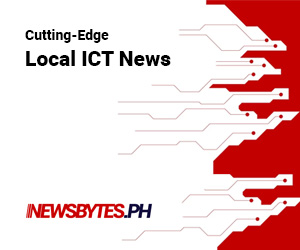
With two years of the pandemic behind them, many enterprises starting up their offices, factory floors and other outlets this year would already be in various stages of their digital transformation journeys.
Some factories would have worked with safe distancing rules by having smart devices and controllers connect to employees based remotely in the new hybrid working format.
Office building owners, meanwhile, could have used the disruption during the pandemic to install smart features, such as connected gantries and lifts that enable both tenants and visitors to register and gain entry safely and easily.
Many such changes will be permanent, as users take to the so-called new normal today. What will change, however, are the experience and quality of the digital setups.
For example, enterprises will discover the reliability of their Internet of Things (IoT) sensors in the real world, and they will find that a low-latency network link is critical to success in many digitalization efforts.
Here are four important trends that will continue to accelerate enterprises’ digital efforts, improving their operational and strategic capabilities, in the new year.
1. A move towards simplicity
Today’s IT infrastructure can be extremely complex because legacy systems are still very much in place in not just highly regulated sectors such as finance, transport or energy, but many other traditional industries.
Despite digitalization, much of the data that is used for digital apps may still be derived from these monolithic systems and companies usually have many such disconnected systems.
Expect this to change as many enterprises have been moving to a more unified foundation for the long term, often with a combination of different public clouds and on-premise setups. In moving toward such unified information system, IT infrastructure and OT systems will need to be merged and function as one integrated data fabric.
What many will desire in 2022 is to simplify their infocomm setups. This would not only enable simpler management to drive efficiencies and unlock silos of data but also improve cybersecurity on the whole. After all, a simpler setup is easier to defend than a complex one that is lacking in visibility and requires constant costly maintenance.
2. When IT meets OT robustness
The meeting of IT with operational technology (OT) has been an interesting one in the past several years. Increasingly, the two are melding, with IT offering a lot more of the robustness and availability of OT, while OT is adopting the flexibility and programmability of IT.
In a smart enterprise, a factory floor, office or retail outlet will have IT and OT working together in a harmonized manner, ensuring that the data on the ground gets collected, analyzed and transmitted to users quickly and accurately. IT offerings are improving to work beyond data center and closer to the edge where the bulk of the data is generated. To be successful at the edge, IT equipment will need to be take on field toughness where routine rebooting is no longer acceptable.
This means increasingly smart devices such as IoT sensors and cameras, as well as compute-heavy servers in the field will increasingly come with increased robustness and high availability.
For enterprises, these features will be increasingly standard. After all, a device can only be smart if it is powered on and working in the environment it has to work in, whether this is in a remote oil field ensuring a pipeline is working well or deep in the bowels of a building monitoring the operation of lifts and air-conditioning systems all day.
3. Building up the edge
One part of the infrastructure that will surely see a lot of activity in the year ahead is the edge.
Already, the use of IoT devices and sensors has shown many enterprises the importance of low-latency connectivity and short response time, which requires the data crunching to be closer to the action, instead of having a task sent to a faraway data center.
Increasingly in a more distributed environment with 5G and Wi-Fi 6 providing high-speed connectivity, more compute and storage task will be carried out at the edge as well.
For example, a factory will be able to analyze images of its products quickly to find any issues and calibrate the production quickly to improve yield as well as quality. To make this kind of continuous and recursive quality assurance possible, a unified IT and OT system will be a prerequisite.
For many more enterprises, the new year will help focus their need for not only fast and powerful devices but more robust ones that will inhabit the edge of their infrastructure.
They would work hand-in-hand with cloud data centers, which will still carry out critical tasks such as heavy-lifting compute and backup, for example. While the devices and compute modules at the edge will handle real-time analysis and parameter optimization in daily operation.
4. Having intrinsic cybersecurity
After another year of escalating cyber threats, it will not be a surprise to see many enterprises beefing up their infrastructure not just by hardening their devices but also increasing the surveillance of possibly data leaks.
As mentioned earlier, part of the solution to this is a more unified, less complex, setup that enables them to more easily visualize, automate and orchestrate common tasks, like updating devices or reconfiguring them for new jobs.
This might include changing out old, legacy hardware that no longer are supported and which would be deemed a security vulnerability.
As high-profile supply-chain attacks in 2021 showed, it is difficult to snuff out the most determined attacks. The new threats also mean that enterprises have to select suppliers that show diligence in delivering a well-tested product with security baked in.
What can be expected are hardened versions of servers and smart devices made for the commercial and industrial environments they are deployed in. They will help both IT and OT systems counter the increasingly sophisticated cyber threats that are expected in the years ahead.
Demystifying the digital journey
These trends are by no means the only ones that will impact enterprises. As they find their way forward in their digital journey, the key will be demystifying many of the challenges involved with transformation. The conversation between IT and OT teams will elevate to a level that they will discover more common grounds and less perceived challenges.
The good news is that purpose-built technologies, from robust servers and IoT devices at the edge to data analytics capabilities, are more readily available for rollout. Gone are the days of lengthy customization efforts and slow deployments.
Systems integrators will be key to many of these rollouts. With their intimate knowledge of the sector and understanding of customer concerns, they can help deliver the measurable results that enterprises seek to keep advancing in the post-pandemic recovery and to move forward in the IT & OT convergence.
The author is the vice president for Asia Pacific at Stratus Technologies




